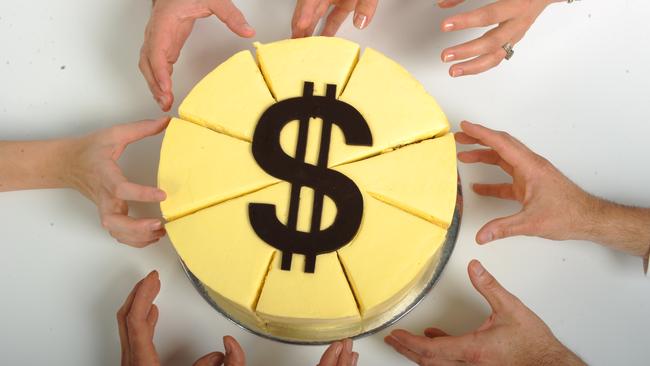Superannuation’s birthday bash make you a money winner
Happy birthday to suuu-perrr: Aussies are big winners as our superannuation system changes for the better.
Opinion
Don't miss out on the headlines from Opinion. Followed categories will be added to My News.
It’s party time for superannuation this weekend as Australia’s compulsory super system celebrates the big three-O, but all the presents are going to the guests.
More money is being paid by employers, more lower-income workers are being paid super, and more senior Australians are able to get money into the low-tax super environment during their 70s.
When compulsory super – known as the Superannuation Guarantee or SG – started in July 1992, just one in 10 people had a super nest egg and most relied solely on the age pension.
Today, Australians hold a combined $3.4 trillion in their super funds and this is projected to double over the next decade.
While super is now 30, it hasn’t yet reached full maturity – or even middle age – and the biggest benefits are still coming.
When the SG started 30 years ago it was set at just 3 per cent of wages, a long way behind the current rate, which jumped from 10 per cent to 10.5 per cent on July 1 and is legislated to reach 12 per cent in 2025.
Many current retirees only had 10 or 20 years of super contributions before they finished work, but today’s younger workers get a full career of nest egg building.
First Super CEO Bill Watson says the system is working as intended. “Over the next decade we will start to see the impact of workers retiring having received the Super Guarantee their entire working lives,” he says.

“For many millions of workers, this is going to be absolutely life-changing.”
In the meantime, the super boosts delivered on July 1 mean:
• About 300,000 lower paid workers – two-thirds of them women – will receive super for the first time after the $450 minimum monthly income threshold for receiving SG was abolished.
• The 0.5 per cent rise in SG will benefit about seven million people and mean an extra $22,000 at retirement for a typical 30-year-old employee, according to Industry Super Australia. And when it reaches 12 per cent it will deliver an extra $78,000 at retirement.
• People aged 67 to 75 will be able to put money into their super even if they’re no longer working – so they can benefit from bigger tax-free superannuation pensions.
The First Home Super Savers Scheme and $300,000 superannuation downsizer scheme also have become more generous.
There are still challenges ahead for super, such as equalising women’s and men’s balances at retirement, where the average for males is near $360,000 but for females it’s $290,000.
And some critics still call super is a waste of taxpayer’s money because of its huge tax concessions that often benefit the wealthiest savers the most.
I believe Australia’s new Labor Government will further tighten the tax breaks for high-income earners and those with giant super balances. Its necessary budget clean-up job after the pandemic’s spending splurge gives it a chance to do this, but people with lower balances and incomes are unlikely to be hurt.
The Australian Institute of Superannuation Trustees says our nation has the world’s fifth largest pile of retirement savings – an impressive feat given we’re the 14th largest economy.
More impressive is the fact that many Australians today are retiring with hundreds of thousands of dollars more wealth than they would have without compulsory superannuation.
More Coverage
Originally published as Superannuation’s birthday bash make you a money winner





